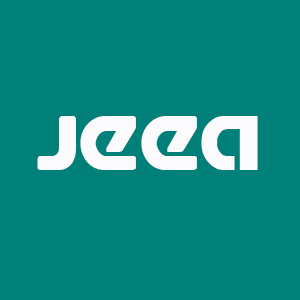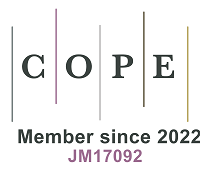REFERENCES
1. Chen M, Tao L, McLean J, Lu C. Quantitative analysis of neonicotinoid insecticide residues in foods: implication for dietary exposures. J Agric Food Chem 2014;62:6082-90.
2. Hook SE, Doan H, Gonzago D, et al. The impacts of modern-use pesticides on shrimp aquaculture: an assessment for north eastern Australia. Ecotoxicol Environ Saf 2018;148:770-80.
3. English SG, Sandoval-Herrera NI, Bishop CA, et al. Neonicotinoid pesticides exert metabolic effects on avian pollinators. Sci Rep 2021;11:2914.
4. Pietrzak D, Kania J, Kmiecik E, Malina G, Wątor K. Fate of selected neonicotinoid insecticides in soil-water systems: current state of the art and knowledge gaps. Chemosphere 2020;255:126981.
5. Baron GL, Raine NE, Brown MJF. General and species-specific impacts of a neonicotinoid insecticide on the ovary development and feeding of wild bumblebee queens. Proc Biol Sci 2017;284:20170123.
6. Zhang Y, Chen D, Du M, et al. Insights into the degradation and toxicity difference mechanism of neonicotinoid pesticides in honeybees by mass spectrometry imaging. Sci Total Environ 2021;774:145170.
7. Jeschke P, Nauen R, Schindler M, Elbert A. Overview of the status and global strategy for neonicotinoids. J Agric Food Chem 2011;59:2897-908.
8. Goulson D, Kleijn D. REVIEW: an overview of the environmental risks posed by neonicotinoid insecticides. J Appl Ecol 2013;50:977-87.
9. Wood TJ, Goulson D. The environmental risks of neonicotinoid pesticides: a review of the evidence post 2013. Environ Sci Pollut Res Int 2017;24:17285-325.
10. Codling G, Naggar YA, Giesy JP, Robertson AJ. Neonicotinoid insecticides in pollen, honey and adult bees in colonies of the European honey bee (Apis mellifera L.) in Egypt. Ecotoxicology 2018;27:122-31.
11. Tanner G, Czerwenka C. LC-MS/MS analysis of neonicotinoid insecticides in honey: methodology and residue findings in Austrian honeys. J Agric Food Chem 2011;59:12271-7.
12. Buszewski B, Bukowska M, Ligor M, Staneczko-Baranowska I. A holistic study of neonicotinoids neuroactive insecticides-properties, applications, occurrence, and analysis. Environ Sci Pollut Res Int 2019;26:34723-40.
13. Proietto Galeano M, Scordino M, Sabatino L, et al. UHPLC/MS-MS analysis of six neonicotinoids in honey by modified QuEChERS: method development, validation, and uncertainty measurement. Int J Food Sci 2013;2013:863904.
14. Fairbrother A, Purdy J, Anderson T, Fell R. Risks of neonicotinoid insecticides to honeybees. Environ Toxicol Chem 2014;33:719-31.
15. Cimino AM, Boyles AL, Thayer KA, Perry MJ. Effects of neonicotinoid pesticide exposure on human health: a systematic review. Environ Health Perspect 2017;125:155-62.
16. Basley K, Goulson D. Neonicotinoids thiamethoxam and clothianidin adversely affect the colonisation of invertebrate populations in aquatic microcosms. Environ Sci Pollut Res Int 2018;25:9593-9.
17. Bal R, Naziroğlu M, Türk G, et al. Insecticide imidacloprid induces morphological and DNA damage through oxidative toxicity on the reproductive organs of developing male rats. Cell Biochem Funct 2012;30:492-9.
18. Han W, Tian Y, Shen X. Human exposure to neonicotinoid insecticides and the evaluation of their potential toxicity: an overview. Chemosphere 2018;192:59-65.
19. Kimura-Kuroda J, Komuta Y, Kuroda Y, Hayashi M, Kawano H. Nicotine-like effects of the neonicotinoid insecticides acetamiprid and imidacloprid on cerebellar neurons from neonatal rats. PLoS One 2012;7:e32432.
20. Iwasa T, Motoyama N, Ambrose JT, Roe R. Mechanism for the differential toxicity of neonicotinoid insecticides in the honey bee, Apis mellifera. Crop Protection 2004;23:371-8.
21. Mitchell EAD, Mulhauser B, Mulot M, Mutabazi A, Glauser G, Aebi A. A worldwide survey of neonicotinoids in honey. Science 2017;358:109-11.
22. Greenleaf SS, Williams NM, Winfree R, Kremen C. Bee foraging ranges and their relationship to body size. Oecologia 2007;153:589-96.
23. Souza APF, Petrarca MH, de Campos Braga PA, Rodrigues NR, Reyes FGR. Analysis of insecticide residues in honey by liquid chromatography tandem mass spectrometry using QuEChERS optimized by the Plackett Burman design. CyTA - Journal of Food 2021;19:326-32.
24. Kala Z. Sweetie, do you know where your honey comes from? Available from: https://www.foodformzansi.co.za/sweetie-do-you-know-where-your-honey-comes-from/ [Last accessed on 13 Dec 2021].
25. Ligor M, Bukowska M, Ratiu IA, Gadzała-Kopciuch R, Buszewski B. Determination of neonicotinoids in honey samples originated from poland and other world countries. Molecules 2020;25:5817.
26. Abafe OA, Macheka LR, Abafe OT, Chokwe TB. Concentrations and human exposure assessment of per and polyfluoroalkyl substances in farmed marine shellfish in South Africa. Chemosphere 2021;281:130985.
27. Wang X, Goulson D, Chen L, et al. Occurrence of neonicotinoids in Chinese apiculture and a corresponding risk exposure assessment. Environ Sci Technol 2020;54:5021-30.
28. Rortais A, Arnold G, Halm M, Touffet-briens F. Modes of honeybees exposure to systemic insecticides: estimated amounts of contaminated pollen and nectar consumed by different categories of bees. Apidologie 2005;36:71-83.
30. Quinn L, B, de J, et al. . Pesticide use in South Africa: one of the largest importers of pesticides in Africa. In: Stoytcheva M, editor. Pesticides in the Modern World - Pesticides Use and Management. InTech; 2011.
31. . Academy of Science of South Africa (ASSAf). Neonicotinoids and their Impact on Ecosystem Services for Agriculture and Biodiversity in Africa. Network of African Science Academies (NASAC); 2019.
32. Song S, Zhang C, Chen Z, et al. Simultaneous determination of neonicotinoid insecticides and insect growth regulators residues in honey using LC-MS/MS with anion exchanger-disposable pipette extraction. J Chromatogr A 2018;1557:51-61.
33. Hu JY, Deng ZB, Qin DM. Determination of diacylhydrazines-type insect growth regulator JS-118 residues in cabbage and soil by high performance liquid chromatography with DAD detection. Bull Environ Contam Toxicol 2009;83:803-7.
34. Payá P, Oliva J, Zafrilla P, Cámara MA, Barba A. Bioavailability of insect growth regulator residues in citrus. Ecotoxicology 2009;18:1137-42.
35. Qian M, Wu L, Zhang H, et al. Determination of 16 insect growth regulators in edible Chinese traditional herbs by liquid chromatography electrospray tandem mass spectrometry. Anal Bioanal Chem 2012;402:2451-62.
36. Hou X, Zhou D, Huai W, et al. Simultaneous determination of cyromazine and dicyclanil in animal edible tissues using UPLC-MS/MS. Food Addit Contam Part A Chem Anal Control Expo Risk Assess 2013;30:660-5.
37. Cui K, Wu X, Wei D, et al. Health risks to dietary neonicotinoids are low for Chinese residents based on an analysis of 13 daily-consumed foods. Environ Int 2021;149:106385.
38. Pirk CWW, Human H, Crewe RM, van Engelsdorp D. A survey of managed honey bee colony losses in the Republic of South Africa–2009 to 2011. Journal of Apicultural Research 2015;53:35-42.
39. British Broadcasting Corporation, BBC. South African bees: 'One million die in Cape Town'. Available from: https://www.bbc.co.uk/news/world-africa-46345127 [Last accessed on 10 Dec 2021].







